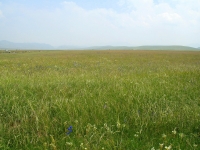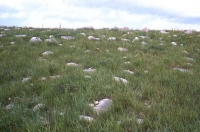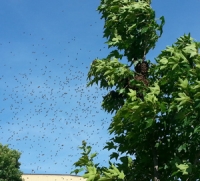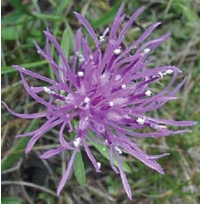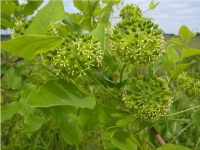

Jeff Veglahn
Jeff was born and raised in La Crosse, Wis. enjoying what the Mississippi River and wetlands had to offer. He received a B.S. in Ecology from Winona State University in Winona, Minn. After graduating in 2009, he and his wife moved here to Milwaukee. Jeff was hired here at the Urban Ecology Center as the Seasonal Land Steward at Riverside Park in 2011. In January of 2013, he started as the permanent Land Steward for the Menomonee Valley branch. His favorite activities include cooking (eating), fishing, and exploring personal faith based disciplines.
Plant Community Highlight: Xeric Prairies Part 2
I personally feel that the beauty of Xeric prairies (and prairies in general) are often overlooked when compared to other habitats such as forest communities. I think this especially holds true if you ask anyone that has driven through Middle America: "How was the scenery?" I would bet most people would say "There's a whole lot of nothing out there!" This might be true, since today, there are less than 0.1% of natural prairies remaining as opposed to the vast majority that could be found years ago!
Plant Community Highlight: Xeric Prairies Part 1 of 2
Xeric prairies are a natural plant community that can be found all over Wisconsin and other varying topographies. Although these communities, which are dominated by grasses rather than trees, may seem dry and ordinary, they have fascinating soil attributes that allow these dry prairies to retain a significant amount of water that helps them be productive plants. When talking about plant communities, prairie is a very general term. It would be like describing all of Milwaukee as a city - yes it's a city, but there are also areas of the city (North side, East side, and South side) and also neighborhoods (Silver City Neighborhood, Washington Park Neighborhood, Riverside Park Neighborhood) that make the city so unique. To extend this metaphor to our plant community, grasslands would be the "city," prairies would be the "area," and the "neighborhood" we're going to focus on would be the Xeric prairies. Read on to learn how this natural grassland neighborhood functions!
Royal Bay-Bee Mania
The topic on the first day of the Urban Ecologists Summer Camp in the Menomonee Valley was insects. The honeybees in our rooftop hive gave the campers a special treat by letting them witness one of the more exciting events in the insect world: a bee swarm, which accompanies the birth of a new queen. This would soon become an experience they wouldn’t forget.
Invasive Plant Spotlight: Spotted Knapweed
This month, I’m going to share some insight on one invasive species that is plaguing the Menomonee Valley. Spotted Knapweed (Centaurea biebersteinii) was introduced to the Northwestern United States around 1890 from Europe and Asia and now is found in 48 of 50 states.
Native Plant Spotlight: Carrion-flower
In this native plant highlight, we are going to look at the carrion-flower (Smilax herbacea), a member of the Smilacaceae family. Plants in this family are shrubs, herbs, or vines and usually perennial. The Smilacaceae family is found in tropical to sub-tropical environments, so you can think of the Carrion-flower as a piece of paradise in Southeast Wisconsin!
Copyright © 2023 The Urban Ecology Center

